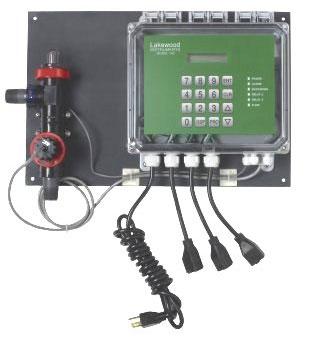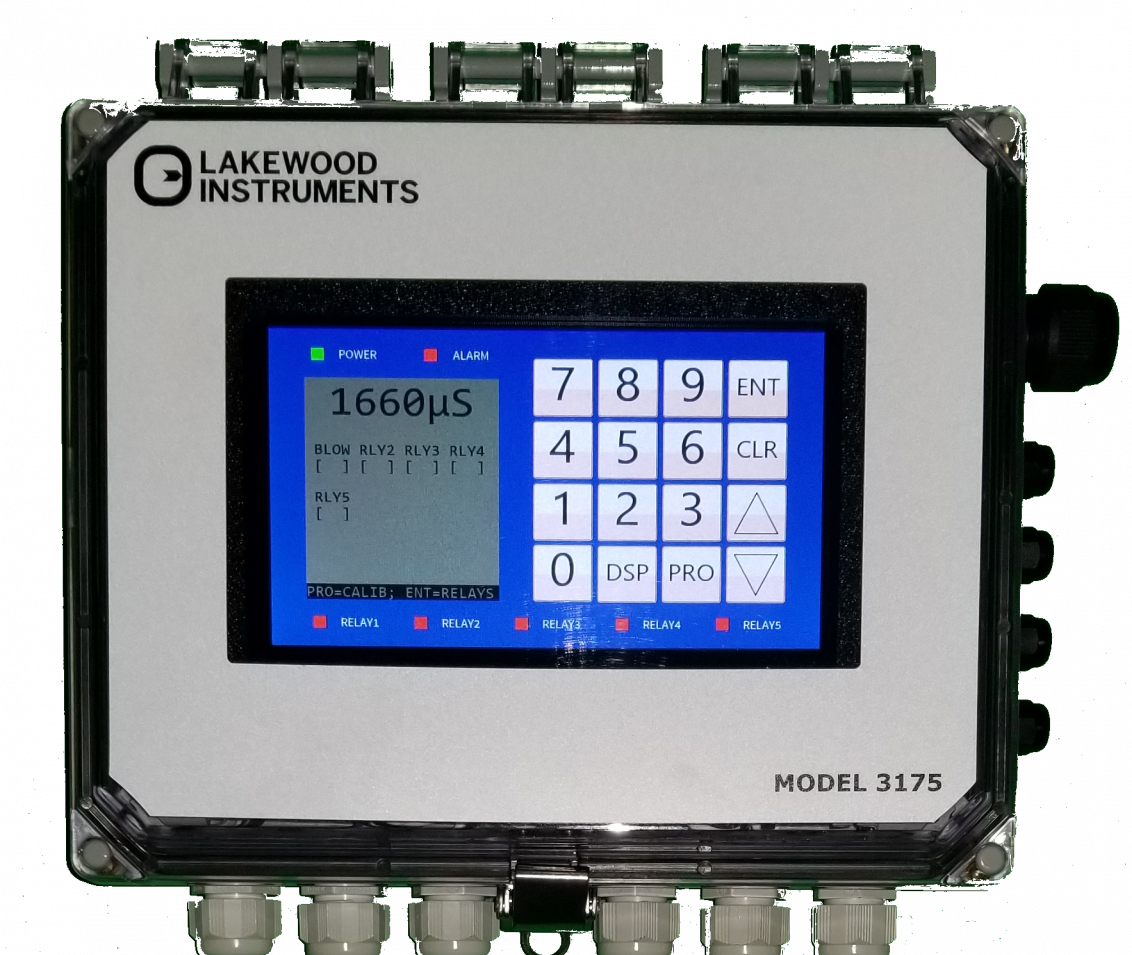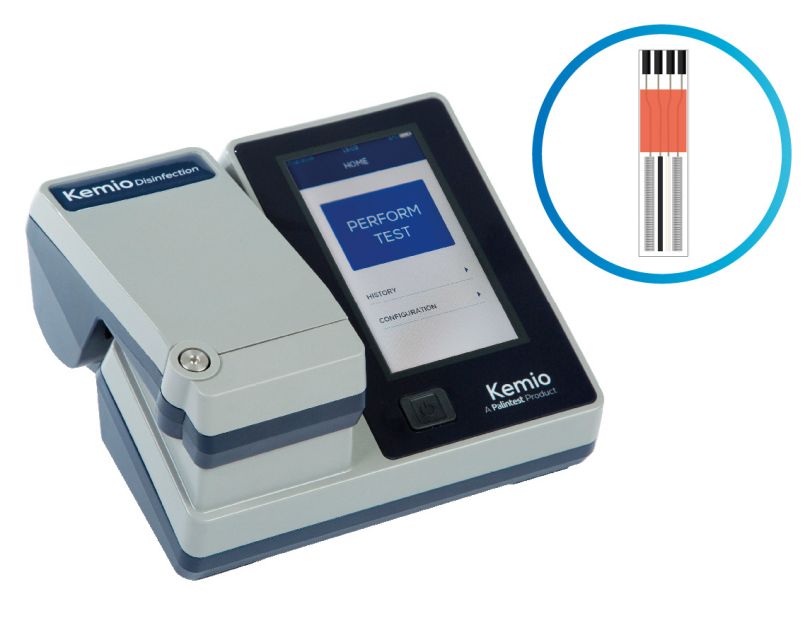What is a positive displacement pump?
November 11, 2016 0 Comments

A positive displacement pump makes water move by trapping a fixed amount and forcing (displacing) that trapped volume into the discharge piping. Some positive displacement pumps use an expanding cavity on the suction side and a decreasing cavity on the discharge side. Water flows into the pump as the cavity on the suction side expands, and the water flows out to the discharge as the cavity collapses. The volume is constant through each cycle of operation.
Positive displacement pumps, unlike centrifugal pumps, theoretically can produce the same flow at a given speed (rpm) no matter what the discharge pressure; thus, these pumps are usually referred to as constant flow machines. However, a slight increase in internal leakage as the pressure increases prevents a truly constant flow-rate.
A positive displacement pump should not operate against a closed valve on the discharge side of the pump because it has no shutoff head like centrifugal pumps do; a positive displacement pump operating against a closed discharge valve continues to produce flow, and the pressure in the discharge line increases until the piping bursts, the pump is damaged or both. A relief or safety valve on the discharge side of the positive displacement pump is, therefore, necessary. The relief valve can be internal or external.
The pump manufacturer normally has an option to supply internal relief or safety valves. An internal valve is often only used as a safety precaution. An external relief valve in the discharge line, with a return line back to the suction source, is usually required. A positive displacement pump can be further classified according to the mechanism used to move water such as reciprocating pumps, screw pumps, progressive cavity pumps, peristaltic pumps, etc. This article focuses on positive displacement pumps in water services.
Reciprocating pumps
Reciprocating pumps move the water using one or more oscillating pistons, plungers or membranes (diaphragms) while valves guide water motion to the desired direction. Many reciprocating-type pumps are duplex (two) or triplex (three) cylinder. They can be either single acting, with suction during one direction of piston motion and discharge on the other, or double acting with suction and discharge in both directions. Reciprocating-type positive displacement pumps are usually available in three major designs: piston-type pumps, plunger pumps or diaphragm pumps. In other words, typical reciprocating pumps are:
- Piston pump displacement pumps: They are usually simple devices for pumping small amounts of water. Radial piston pumps are sometimes used in special applications.
- Plunger pumps: A reciprocating plunger pushes water through one or two open valves, which are closed by suction on the way back.
- Diaphragm pumps: Similar to plunger pumps in which the diaphragm pressurizes water.
Plunger pumps consist of a cylinder with a reciprocating plunger. The suction and discharge valves are mounted in the head of the cylinder. In the suction stroke, the plunger retracts and the suction valves open, causing the suction of water into the cylinder. In the forward stroke, the plunger pushes water out of the discharge valve. With only one cylinder in a plunger pump, water flow varies between maximum flow, when the plunger moves through the middle positions, and zero flow, when the plunger is at the end positions.
Some energy is wasted when water is accelerated in the piping system, and vibration and water-hammer can be a serious problem. In general, the problems are compensated for by using two or more cylinders that do not work in phase with each other.
Triplex plunger pumps use three plungers, which reduces the pulsation found with single reciprocating plunger pumps. Durable seals, hardened crankshafts, hardened connecting rods, thick ceramic plungers and heavier-duty ball and roller bearings improve reliability in triplex pumps. Triplex pumps now are used in different applications across the world.
Pulsation could be an issue in any positive displacement pump; this is a critical issue in a reciprocating pump. As an indication, distances between hold downs should vary with pulsation intervals and line sizes Major fittings, such as elbows, etc., relatively close to a positive displacement pump should have these hold downs. As an indication, this distance could be considered 1.5 to 3 meters depending on pump power and severity of pulsation. Adding a pulsation vessel (pulsation dampener) on the pump outlet and inlets can further smooth the pump ripple and pulsation. Plunger pumps with a larger number of plungers have the benefit of increased flow, or smoother flow without a pulsation dampener. The increase in moving parts and crankshaft load is one of drawbacks.
Screw pumps
A screw pump is a positive displacement pump that uses one or several screws to move water along the screw axis. In its simplest form (Archimedes’ screw pump), a single screw rotates in a cylindrical cavity, thereby moving water along the screw’s spindle. This old construction is still used in some low-tech applications. A modern screw pump is usually a more complicated type of rotary pump that uses two (or three) screws with opposing thread, for instance, one screw turns clockwise and the other counterclockwise. The screws are mounted on parallel shafts that have gears that mesh so the shafts turn together and everything stays in place.
The screws turn on the shafts and drive water through the pump. The clearance between moving parts and the pump’s casing should be optimum. Development of a screw pump has led to a variety of multiple-axis technologies in which carefully crafted screws rotate in opposite directions or remains stationary within a cavity. The cavity can be profiled, thereby creating cavities where water is “trapped.”
The term “screw pump” often is used generically. However, for each application, the specific type of screw pump should be defined. It is necessary to recognize the specific pump or screw configurations as well as the uses, advantages and design considerations for each. The design differences of each screw configuration and pump type make each suitable for different water applications. Each screw pump operates on the same basic principal of a screw turning to isolate a volume of water and convey it. However, the mechanical design of each is different. The primary difference is in having one, two, three or multiple screw pumps.
Progressive cavity pumps
A progressive cavity pump is a type of positive displacement pump and is also known as an eccentric screw pump or cavity pump. These pumps transfer water by means of the progressive movement of a sequence of small, fixed-shape, discrete cavities as its rotor is turned. This leads to the volumetric flow-rate being proportional to the rotation rate (bi-directionally) and to low levels of shearing being applied to the pumped water. The cavities taper down toward their ends and overlap with their neighbors.
In general, little flow pulsing is caused by the arrival of cavities at the outlet. Such a pump usually consists of a helical rotor about ten times as long as its width. This can be visualized as a central core of diameter, typically with a curved spiral wound around a thickness half that of the central core diameter, though in reality, it is manufactured in a single casting. This shaft usually fits inside a heavy duty rubber sleeve of wall thickness typically around the central core diameter. As the shaft rotates, the rotor gradually forces water up the rubber sleeve. Such pumps can develop very high pressure at low volumes. These pumps are often referred to by their specific manufacturer or product names.
A progressive cavity pump consists of a helical rotor and a twin helix twice the wavelength and double the diameter of the helical hole in a rubber stator. The rotor seals tightly against the rubber stator, as it rotates, forming a set of fixed-size cavities in between. The cavities move when the rotor is rotated, but their shape or volume does not change.
The pumped water is moved inside the cavities. The principle of this pumping technique is frequently misunderstood. Often it is believed to occur due to a dynamic effect caused by drag or friction against the moving teeth of the screw rotor. In reality, the pumping is due to the sealed cavities, like a piston pump, and it has similar operational characteristics, such as being able to pump at extremely low-flow rates, even to high pressure, revealing the effect to be purely positive displacement. At a high enough pressure, the sliding seals between cavities will leak water, rather than pumping it, so when pumping against high pressures, a longer pump with more cavities is more effective, since each seal only has to deal with the pressure difference between adjacent cavities. Pumps with between two and a dozen (or so) cavities exist. When the rotor is rotated, it rolls around the inside surface of the hole. The motion of the rotor is the same as in the smaller gears of a planetary gears system.
Different rotor shapes and rotor/stator pitch ratios are available. In operation, progressive cavity pumps are fundamentally fixed-flow-rate pumps like piston pumps, and this type of pump needs a fundamentally different understanding from centrifugal pumps. Great care should be taken. Two common designs of stators are the “equal walled” and the “unequal walled.” The latter has greater elastomer wall thickness at the peaks; the former has a constant elastomer wall thickness and is more often used for water services.
Peristaltic pumps
A peristaltic pump is a type of positive displacement pump used for pumping a variety of water services. Water is contained within a flexible tube fitted inside a circular pump casing, though linear peristaltic pumps have also been made. A rotor with “rollers,” “shoes,” “wipers,” or “lobes” attached to the external circumference of the rotor compresses the flexible tube as the rotor turns. The part of the tube under compression is pinched closed (or “occludes”), thus forcing water to be pumped to move through the tube.
Additionally, as the tube opens to its natural state after passing the cam (“restitution” or “resilience”), water flow is induced to the pump. This process is called “peristalsis.” Typically, there will be two or more rollers, or wipers, occluding the tube, trapping between them a body of water. It is then transported, at ambient pressure, toward the pump outlet. Peristaltic pumps can run continuously, or they can be indexed through partial revolutions to deliver smaller amounts of water.
The peristaltic pump head and rollers are of large diameter. The asymmetrical head design and spring-loaded, off-center levers move the rollers gradually and softly, thus increasing tubing life and reducing pulsations. The ideal peristaltic pump should have an infinite diameter of pump head and the largest possible diameter of rollers. This ideal peristaltic pump would offer the longest possible tubing life and provide a constant and pulsation-free flow-rate. Such an ideal peristaltic pump cannot be constructed in reality. However, peristaltic pumps can be designed to approach these ideal peristaltic pump parameters.
Water contacts only the inside surface of the tubing, thereby negating concern for other valves, O-rings or seals that might be incompatible. Therefore, only the composition of the tubing that the pumped medium travels through is considered for each specific water service. The tubing needs to be elastomeric to maintain the circular cross section after millions of cycles of squeezing in the pump.
About the positive displacement pump
The minimum gap between the roller and the housing determines the maximum squeeze applied on the tubing. The amount of squeeze applied to the tubing affects pumping performance and the tube life: More squeezing decreases the tubing life dramatically, while less squeezing can cause the pumped medium to slip back, especially in high-pressure pumping, and decreases the efficiency of the pump dramatically. The high velocity of the slip back also typically causes premature failure of the hose. Therefore, the amount of squeeze becomes an important design parameter.
The term “occlusion” is used to measure the amount of squeeze. It is either expressed as a percentage of twice the wall thickness, or as an absolute amount of the wall that is squeezed. The occlusion is typically 10 to 20 percent, with a higher occlusion for a softer tube material and a lower occlusion for a harder tube material. Therefore, for a given pump, the most critical tubing dimension becomes the wall thickness. An interesting point here is that the inside diameter of the tubing is a less important design parameter for the tubing’s suitability for a pump, so it is common for more than one inside diameter (ID) be used with a pump, as long as the wall thickness remains the same.
Also in Blog

Advanced Cooling Tower Management: Enhancing Efficiency with Lakewood Model 140
February 28, 2024 0 Comments

Optimizing Cooling Tower Performance: Understanding Efficiency, Maintenance, and Water Quality Management
February 28, 2024 0 Comments

Revolutionizing Water Analysis: Everything You Need to Know About the Kemio KEM10DIS
April 19, 2023 0 Comments

